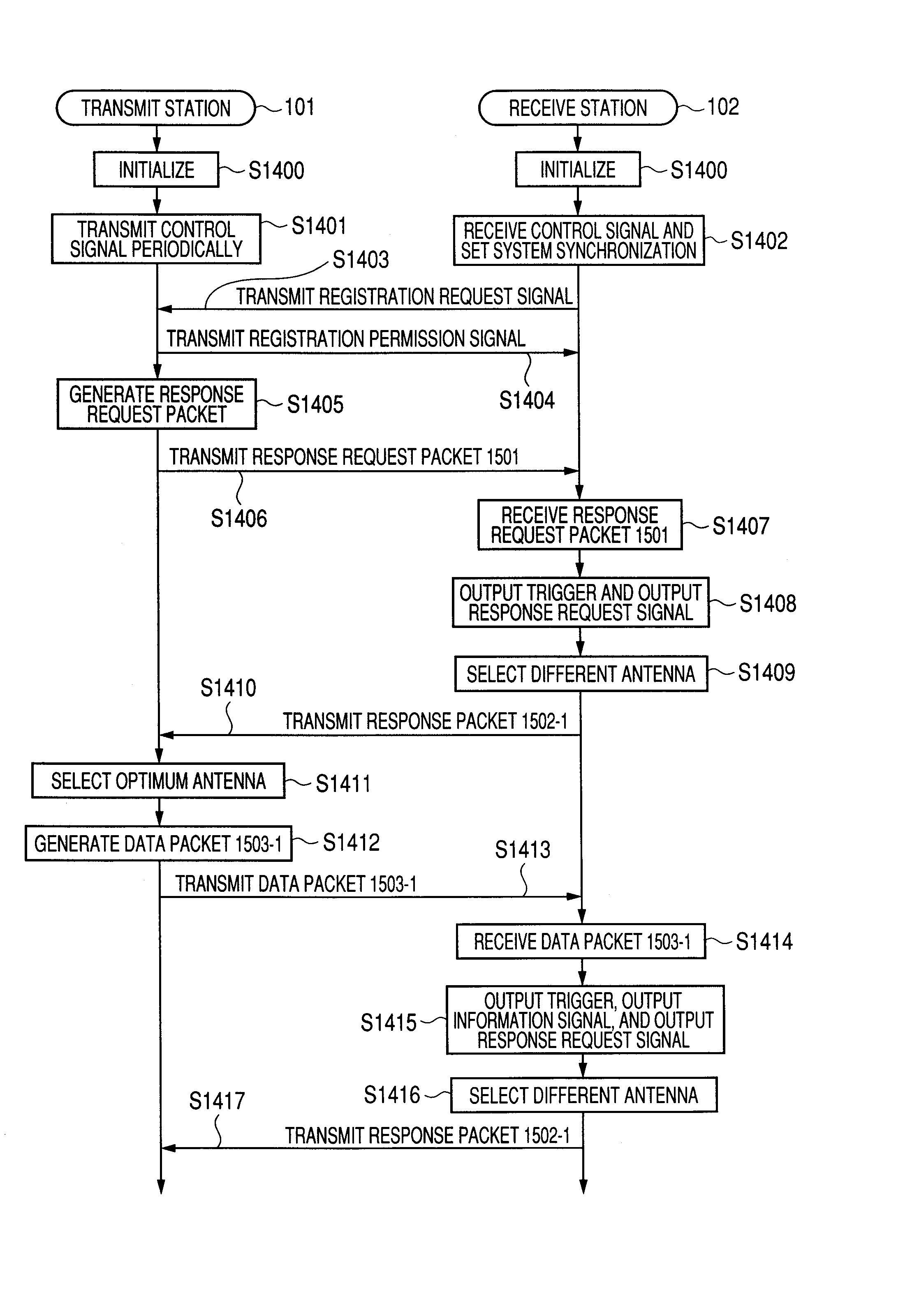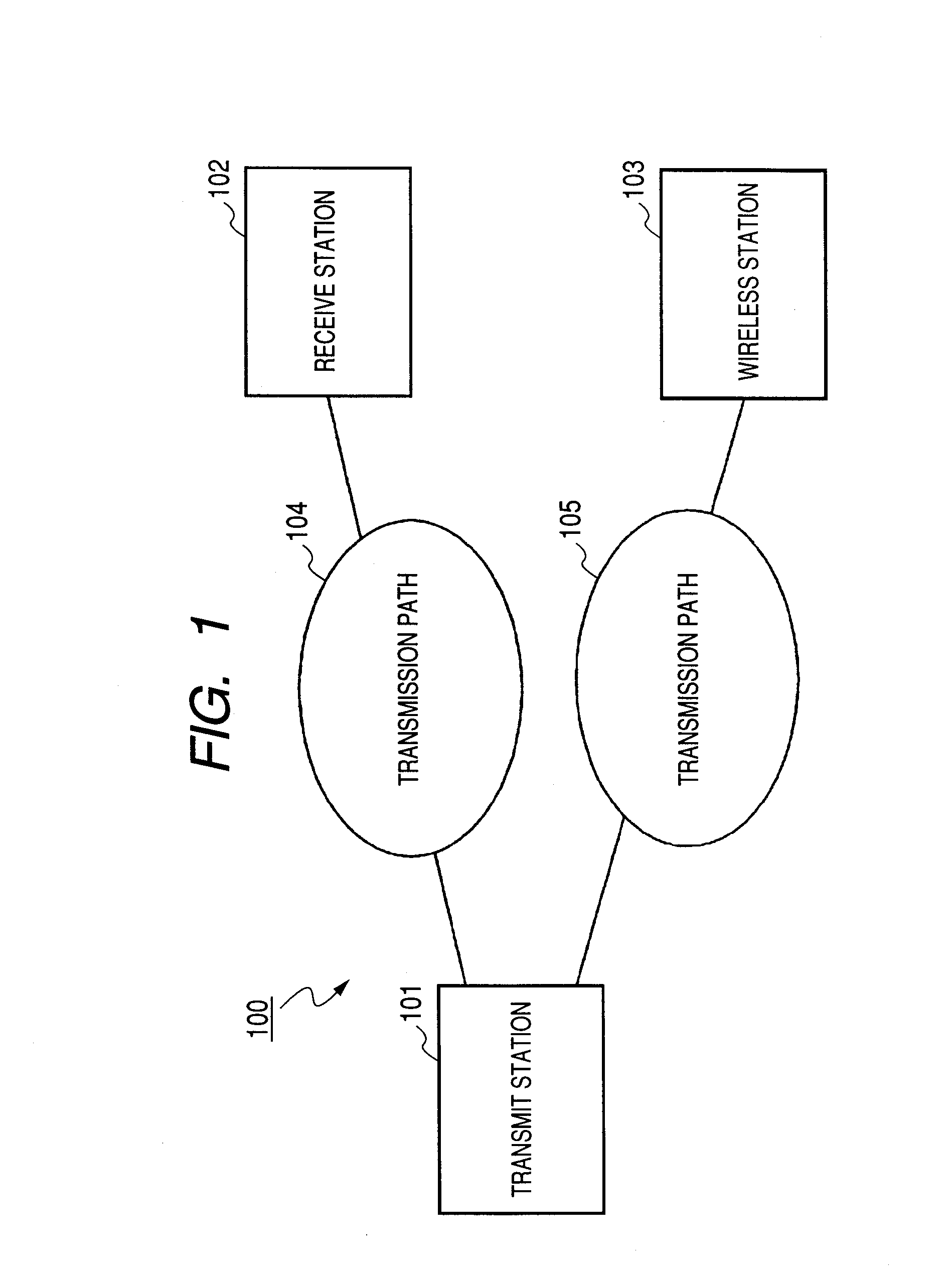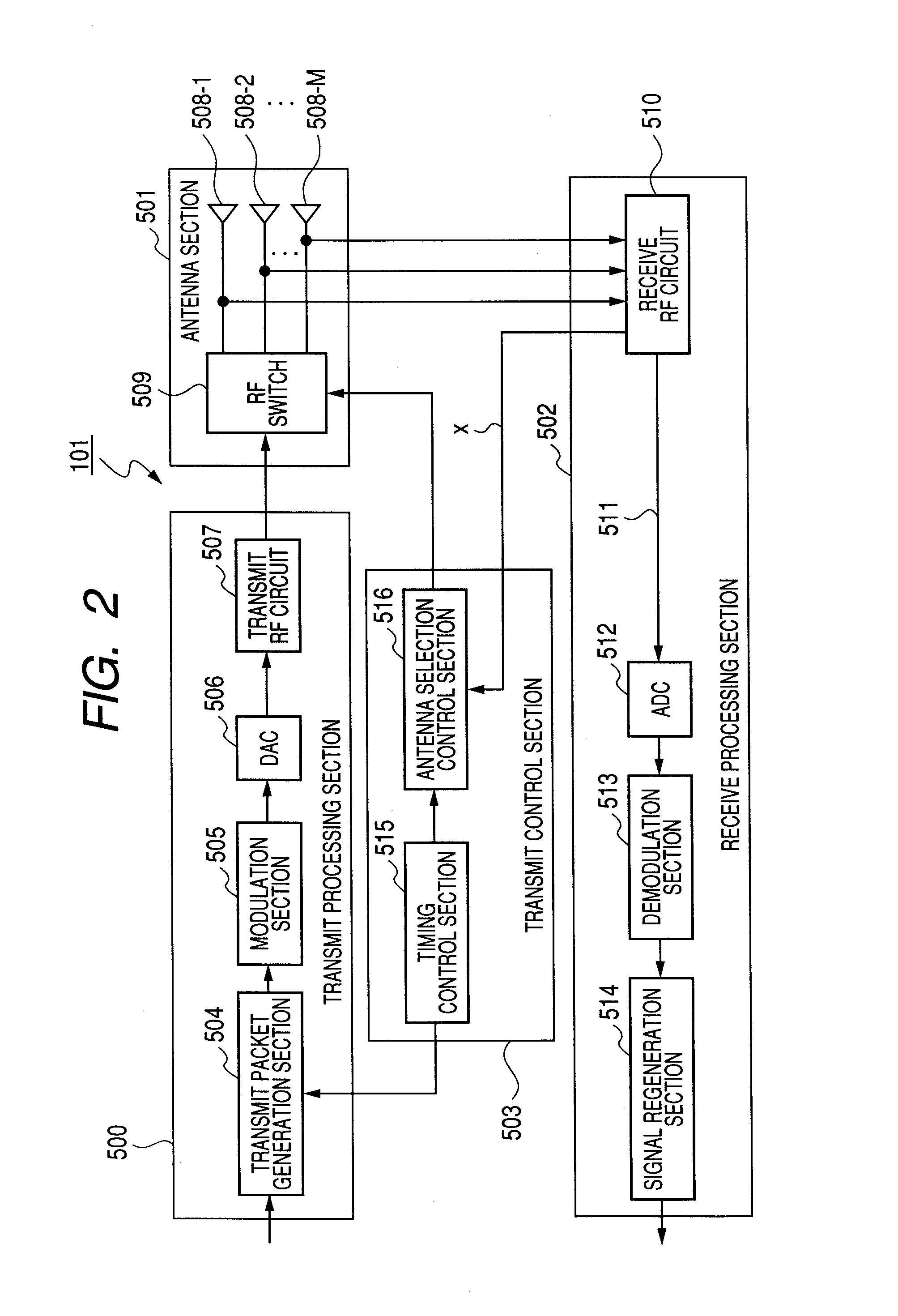Wireless Communication System and Radio Station
- Summary
- Abstract
- Description
- Claims
- Application Information
AI Technical Summary
Benefits of technology
Problems solved by technology
Method used
Image
Examples
first embodiment
[0067]FIG. 1 is a diagram to show the schematic configuration of a wireless communication system to describe a first embodiment of the invention.
[0068] A wireless communication system 100 shown in FIG. 1 includes a wireless station 101 (which will be hereinafter referred to as transmit station 101), a wireless station 102 (which will be hereinafter referred to as receive station 102), and a wireless station103. The transmit station 101 is an access point of a wireless LAN, etc., for example. The receive station 102 and the wireless station 103 are mobile wireless terminals of mobile telephones, LAN cards, etc., for example. The transmit station 101, the receive station 102, and the wireless station 103 exist at the same time in the communication area of the transmit station 101. The transmit station 101, the receive station 102, and the wireless station 103 can conduct wireless packet communications with each other according to the communication area provided by the transmit statio...
second embodiment
[0134] A wireless communication system of a second embodiment has a configuration wherein transmit power of a transmit packet transmitted from the transmit station 101 is controlled based on the quality of the transmission path 104 in the wireless communication system of the first embodiment. Only differences from the configuration described in the first embodiment will be discussed below:
[0135]FIG. 8 is a diagram to show the schematic configuration of a transmit station of the wireless communication system to describe the second embodiment of the invention. Components similar to those in FIG. 2 are denoted by the same reference numerals in FIG. 8.
[0136] A transmit station 101 shown in FIG. 8 is configured so that an antenna selection control section 516 generates a power control signal 800 for controlling the transmit power of a transmit packet based on a quality information signal X and a transmit RF circuit 507 inputs the power control signal 800 and controls the transmit power...
third embodiment
[0141] In the wireless communication system described in the first or second embodiment, the antenna selection control section 711 of the receive station 102 determines an antenna to be selected by the RF switch 705 at random and thus the antennas 704-1 to 704-N are selected at a uniform probability. Therefore, a sufficient diversity gain cannot necessarily be provided. Then, in a wireless communication system of a third embodiment, the probability is inclined.
[0142] Only differences from the configuration described in the first or second embodiment will be discussed below:
[0143] An antenna selection control section 711 of a receive station 102 of the third embodiment determines an antenna to be selected by an RF switch 705 according to a selection probability table indicating what probability each of antennas 704-1 to 704-N is to be selected at. The selection probability table is previously stored in memory in a receive station 102. A receive RF circuit 706 of the receive station...
PUM
 Login to View More
Login to View More Abstract
Description
Claims
Application Information
 Login to View More
Login to View More - R&D
- Intellectual Property
- Life Sciences
- Materials
- Tech Scout
- Unparalleled Data Quality
- Higher Quality Content
- 60% Fewer Hallucinations
Browse by: Latest US Patents, China's latest patents, Technical Efficacy Thesaurus, Application Domain, Technology Topic, Popular Technical Reports.
© 2025 PatSnap. All rights reserved.Legal|Privacy policy|Modern Slavery Act Transparency Statement|Sitemap|About US| Contact US: help@patsnap.com



